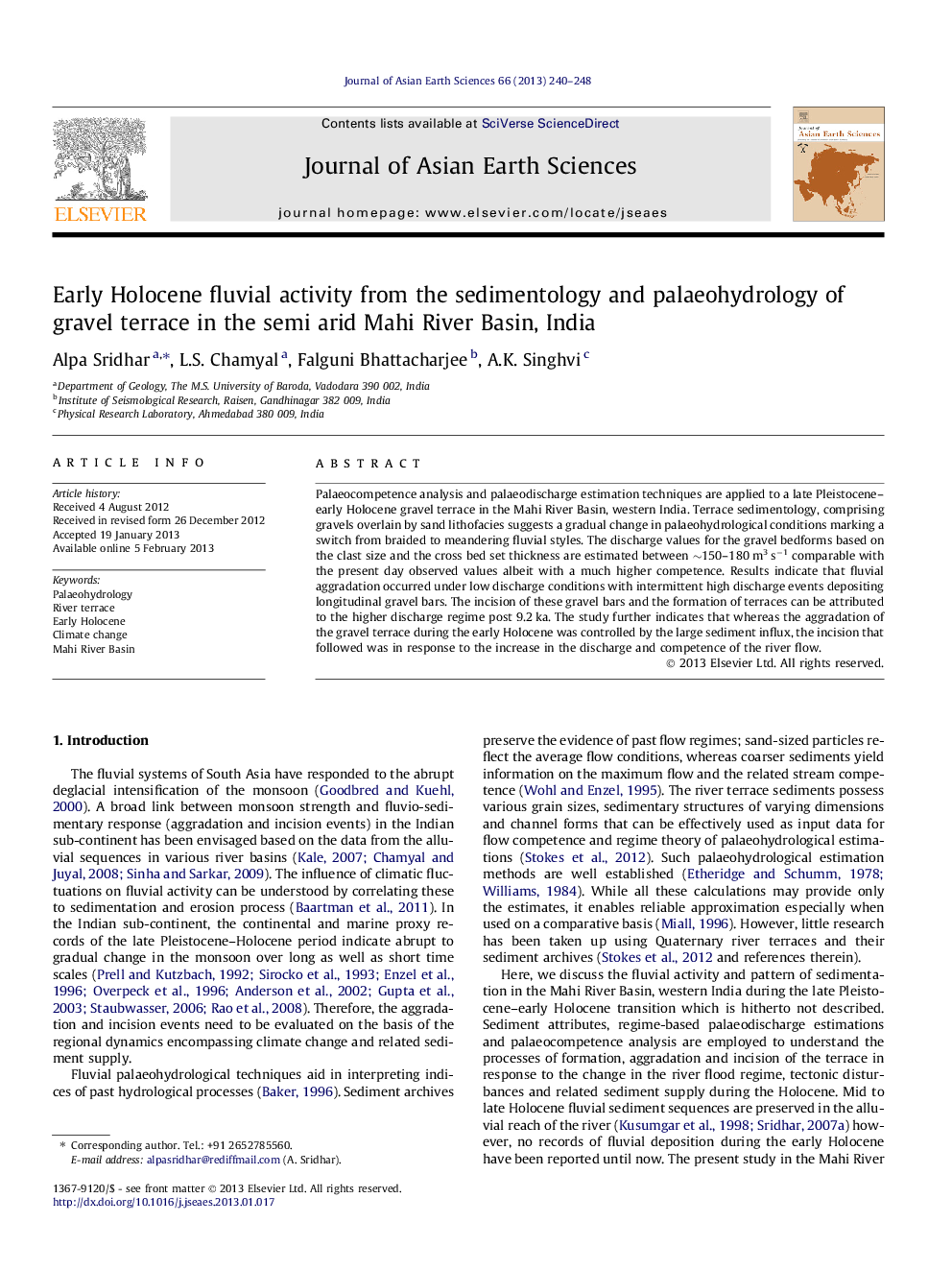| Article ID | Journal | Published Year | Pages | File Type |
|---|---|---|---|---|
| 4731180 | Journal of Asian Earth Sciences | 2013 | 9 Pages |
Palaeocompetence analysis and palaeodischarge estimation techniques are applied to a late Pleistocene–early Holocene gravel terrace in the Mahi River Basin, western India. Terrace sedimentology, comprising gravels overlain by sand lithofacies suggests a gradual change in palaeohydrological conditions marking a switch from braided to meandering fluvial styles. The discharge values for the gravel bedforms based on the clast size and the cross bed set thickness are estimated between ∼150–180 m3 s−1 comparable with the present day observed values albeit with a much higher competence. Results indicate that fluvial aggradation occurred under low discharge conditions with intermittent high discharge events depositing longitudinal gravel bars. The incision of these gravel bars and the formation of terraces can be attributed to the higher discharge regime post 9.2 ka. The study further indicates that whereas the aggradation of the gravel terrace during the early Holocene was controlled by the large sediment influx, the incision that followed was in response to the increase in the discharge and competence of the river flow.
► Palaeohydrological analysis is applied to late Pleistocene–early Holocene terrace. ► Early Holocene discharge is comparable to present but with higher competence. ► Fluvial aggradation occurred under low discharge condition and high sediment supply. ► The incision was in response to major pulses of high discharge during mid Holocene.
